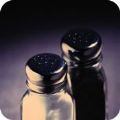|
The idea that placing dishes of raw onions around the home would stave off illness dates back to the massive flu outbreak of 1919. The thinking went that halved onions could absorb germs. Even though that particular onion "fact" is merely a fiction, there are still plenty of good to recommend them: namely, great low-calorie flavor, plus a few legitimate health benefits to boot. All about Alliums You may think of onions as those white slices that come on your hamburger, but there's more to onions than you think. Onions are part of the Allium family, which includes a whole range of flavorful root vegetables: garlic; red, white and yellow onions; scallions (also called green or spring onions); shallots, leeks and chives. All alliums grow as underground bulbs with above-ground leaves and a flower stalk. Onions contain beneficial polyphenols, sulfur compounds and vitamin C. The sulfur compounds produce their distinctive sharp odor and strong flavor, while also providing some health benefits because of their anti-clotting, antioxidant and anti-inflammatory properties. (Note that much of the research on the health benefits of alliums has focused on garlic, while onions are less thoroughly tested.) These sulfur compounds are also responsible for making you "cry" when you slice an onion; when these compounds waft upward and mix with your natural tears, they form a mild (and irritating) sulfuric acid. Nutrition by Variety Did you know that the greatest nutritional value is contained in the outer rings of an onion? When you peel an onion, be sure to remove only the papery skin and any outer layer that's damaged—don't over peel! All varieties of onions contain zero fat and cholesterol, and most have less than one gram of sodium, while they provide plenty of vitamins.  Red, white and yellow "cooking" or "storage" onions are widely available year-round; their papery skins help extend their shelf life. Red onions are typically stronger and more pungent. These onions are high in vitamin C. Red, white and yellow "cooking" or "storage" onions are widely available year-round; their papery skins help extend their shelf life. Red onions are typically stronger and more pungent. These onions are high in vitamin C.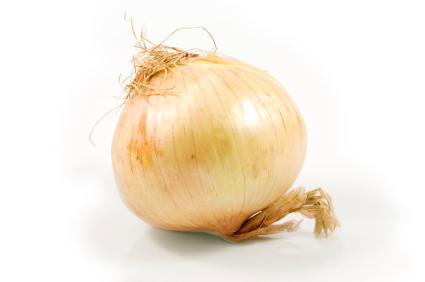 Sweet onion varieties include Vidalia, Walla Walla and candy; these are mild and sweet-tasting, and are excellent in most recipes. They are also a good source of vitamin C and contain a small amount of calcium. Sweet onion varieties include Vidalia, Walla Walla and candy; these are mild and sweet-tasting, and are excellent in most recipes. They are also a good source of vitamin C and contain a small amount of calcium.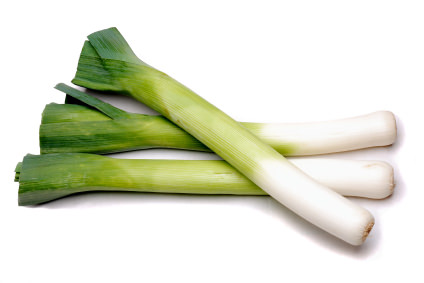 Leeks grow in upright cylinders instead of round bulbs; they're typically buried deep in sandy soil to produce a longer white portion. Leeks are commonly sautéed as a flavor base in soups and sauces. They pack quite a vitamin punch with high levels of vitamin C and A, plus calcium and iron. Leeks grow in upright cylinders instead of round bulbs; they're typically buried deep in sandy soil to produce a longer white portion. Leeks are commonly sautéed as a flavor base in soups and sauces. They pack quite a vitamin punch with high levels of vitamin C and A, plus calcium and iron.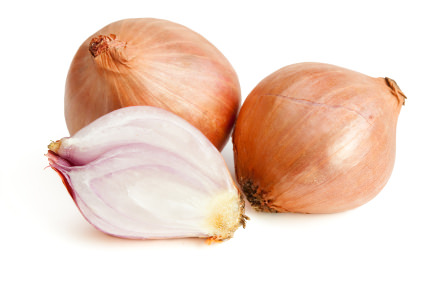 Shallots are small, reddish-brown bulbs that are commonly minced and sautéed as a flavor base or used raw in salad dressings. While their names are easily mistaken, shallots and scallions (detailed below) are not the same. They contain vitamins A and C and iron. Shallots are small, reddish-brown bulbs that are commonly minced and sautéed as a flavor base or used raw in salad dressings. While their names are easily mistaken, shallots and scallions (detailed below) are not the same. They contain vitamins A and C and iron.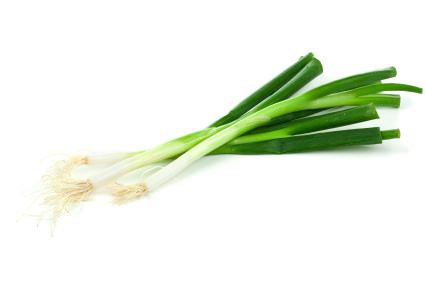 Green onions (also called scallions or spring onions) are slender, with an inch or two of white topped by long green leaves. The white and pale green portions are used in cooking, the green tops can be sliced thin as a garnish. They are a source of vitamins A and C, as well as calcium and iron. Green onions (also called scallions or spring onions) are slender, with an inch or two of white topped by long green leaves. The white and pale green portions are used in cooking, the green tops can be sliced thin as a garnish. They are a source of vitamins A and C, as well as calcium and iron.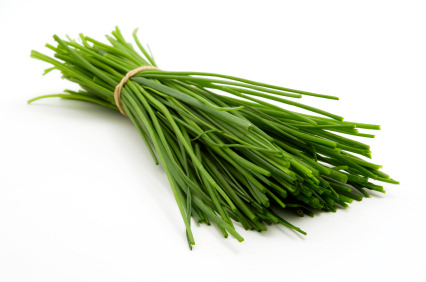 Chives are slender herbs with a bright, lightly oniony taste. They're best used fresh, snipped or gently chopped as a garnish. Chives are a good source of both vitamins A and C. Chives are slender herbs with a bright, lightly oniony taste. They're best used fresh, snipped or gently chopped as a garnish. Chives are a good source of both vitamins A and C.Nutrition Facts
Buying and Storing For sweet onions, cooking onions and shallots, look for bulbs that are undamaged, with no soft spots and their papery skins intact. For leeks and green onions, seek produce that's clean, with leaves that are deep green and not withered or wilted. Chives are often sold in plastic packages in the produce section; look for deep green color and no wilting. Alliums with papery skins may be stored in a cool, dark place with room to "breathe" but should not be stored closely with potatoes. Leeks and green onions should be refrigerated for up to two weeks. Alliums are also available in processed form, as in freeze-dried chives or onion granules or powder. These dried variations are fine for use in recipes like dressings or dips, but are not a good substitute for raw onion in cooking. Cooking Calorie-for-calorie, onions pack a huge flavor wallop, whether you eat them raw or cooked. Some people love the sharp, pungent taste of raw onion—even though it can linger on the breath for hours after eating. If raw onion disagrees with you (or other people in the room with you!), don't worry: Cooking onions doesn't damage their nutritional benefits as long as you don't cook them for more than seven minutes. As a convenience, you can prepare chopped onions in advance and freeze them in small containers for later cooking; however, their flavor may lessen a bit. With raw alliums used in dressings or salsas, you can tame the strong taste by rinsing chopped onions (or scallions or shallots) under cold water in a strainer for a minute or two. Onions can be grilled, or cooked over low heat for a long time to caramelize them. These recipes make excellent use of onions and their kin: 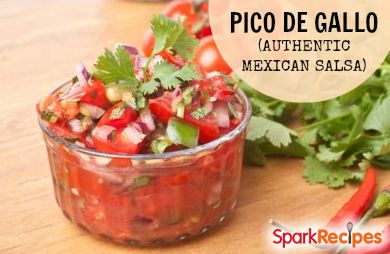 Pico de Gallo Pico de GalloUse red onion or green onions in this classic fresh salsa recipe. 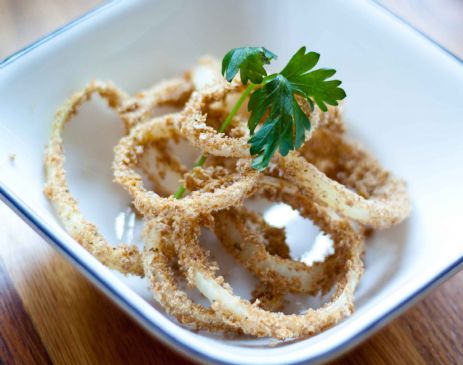 Baked Onion Rings A more healthful alternative to deep-fried onions, these work best with the sweet onion varieties (Candy, Vidalia or Walla Walla). Baked Onion Rings A more healthful alternative to deep-fried onions, these work best with the sweet onion varieties (Candy, Vidalia or Walla Walla). Island Chicken with Pineapple Salsa Island Chicken with Pineapple SalsaDiced red onion gives a real kick to an interesting fruit-based salsa to top chicken or fish.  Tangy Cucumber and Onion Salad Tangy Cucumber and Onion SaladThinly sliced onion and a splash of vinegar liven up a refreshing summer salad. Sources What's New and Beneficial about Onions, from The World's Healthiest Foods Onions, from SELF Nutrition Data Calories in Onions, Spring Or Scallions, from Calorie Count |

